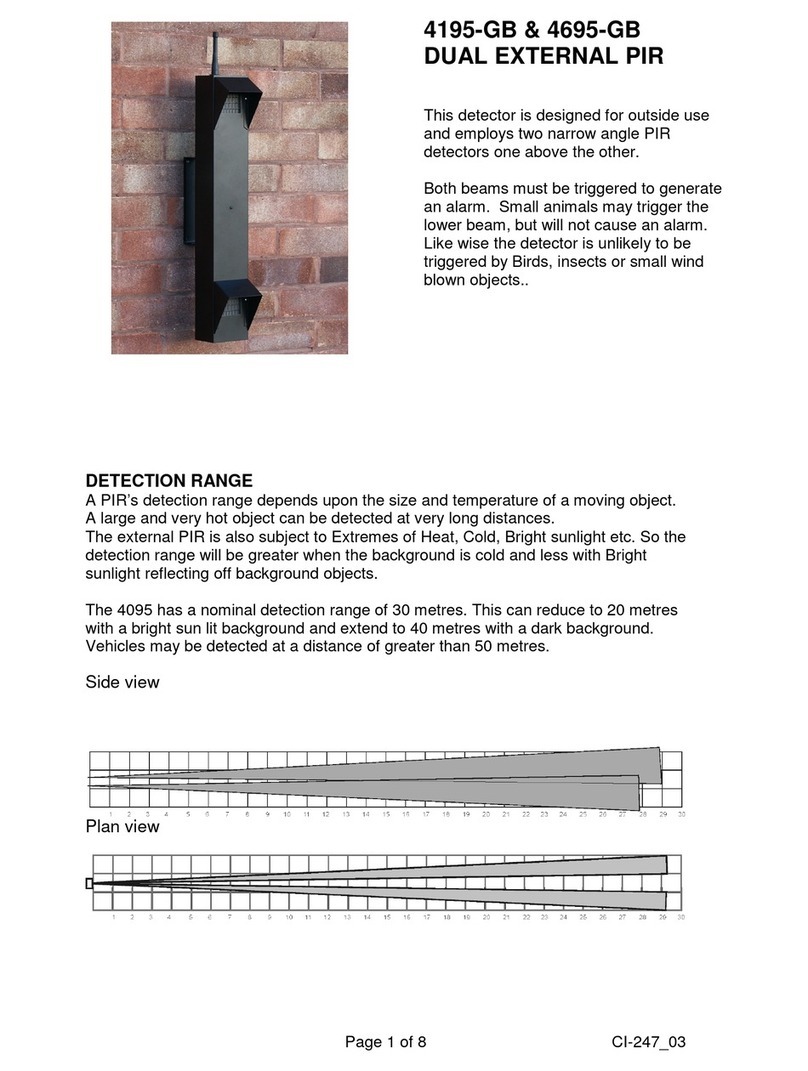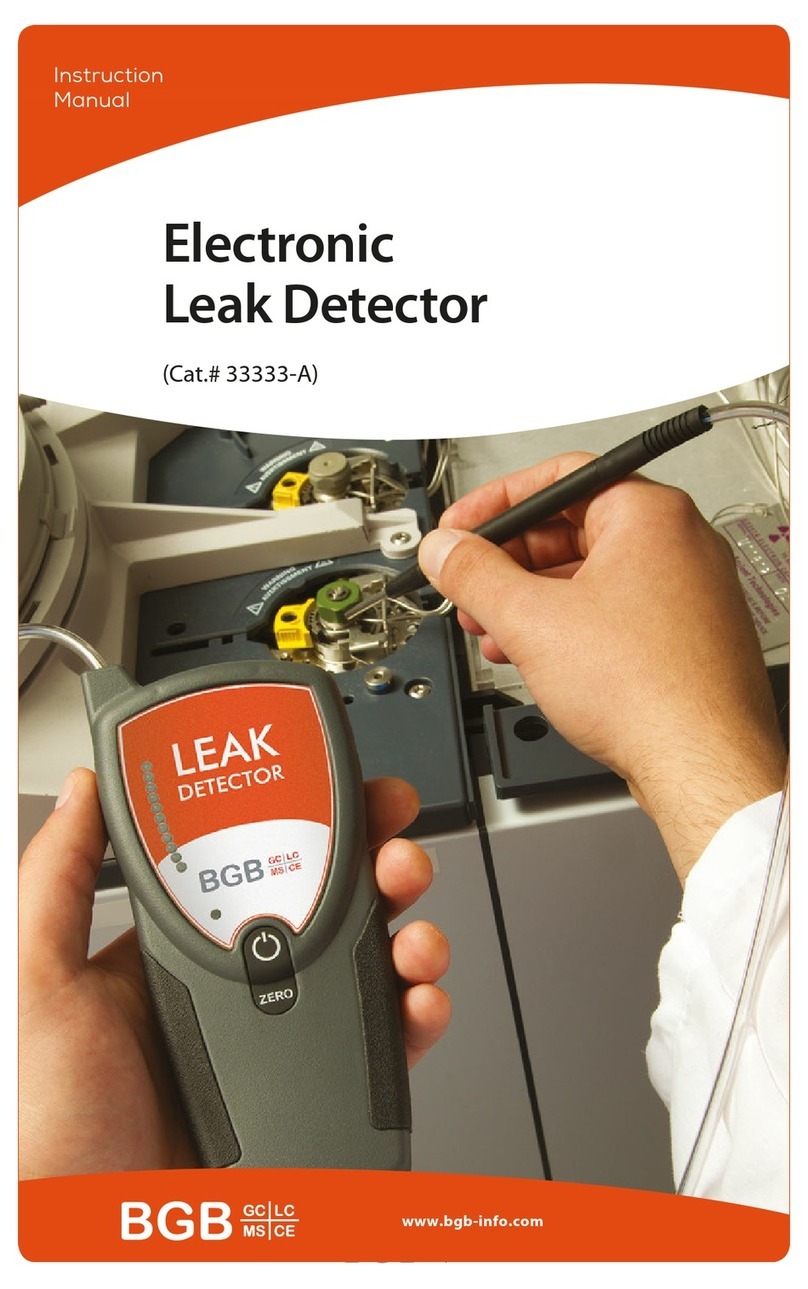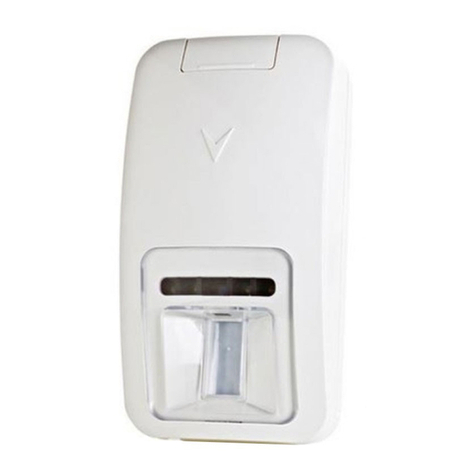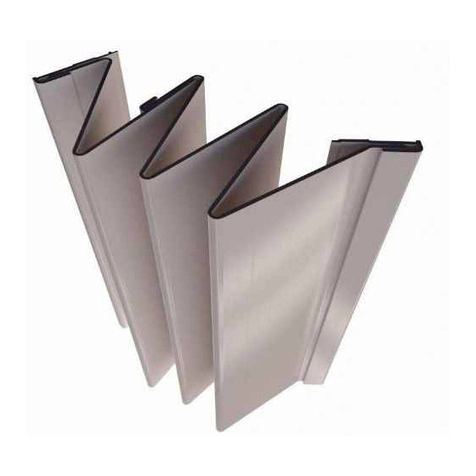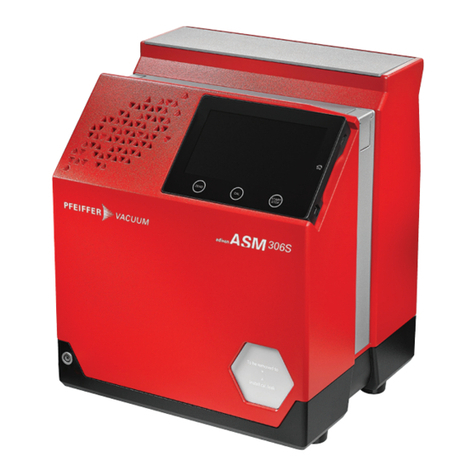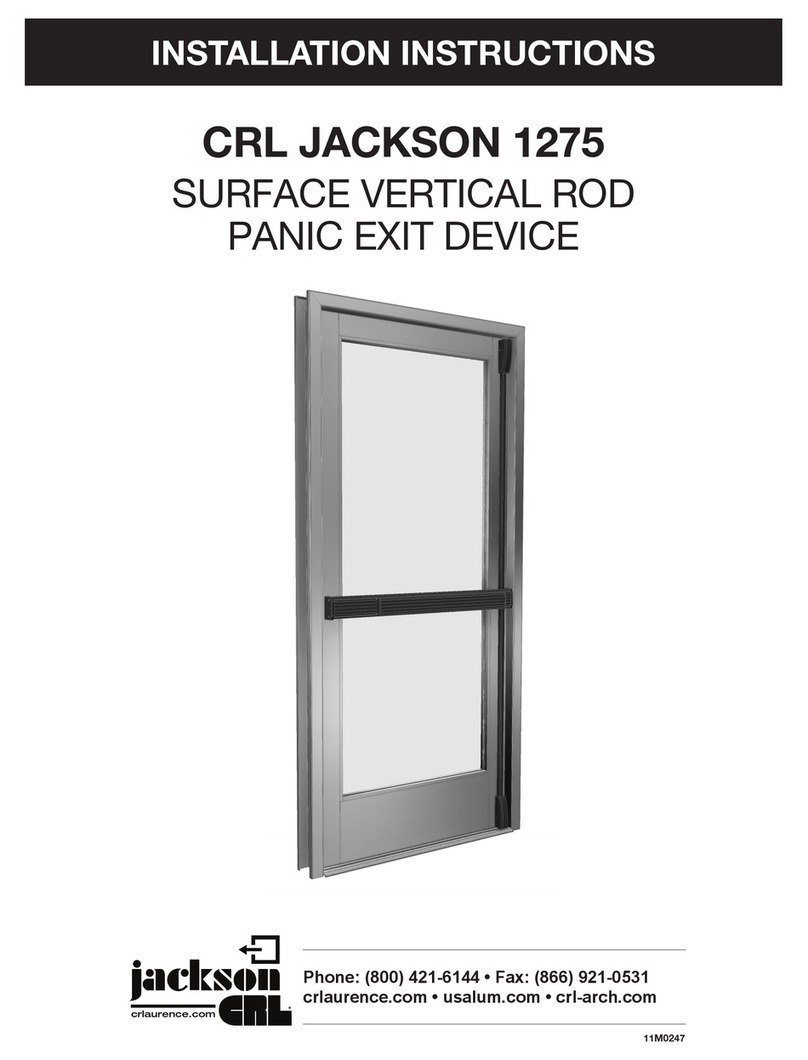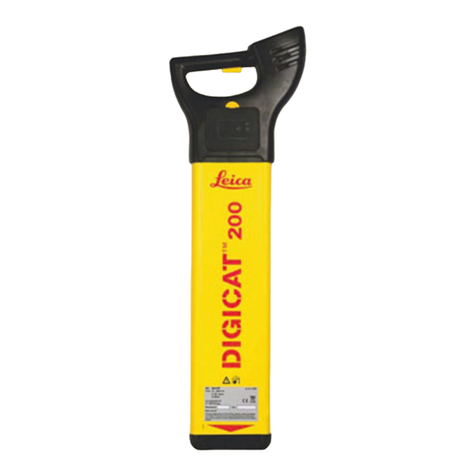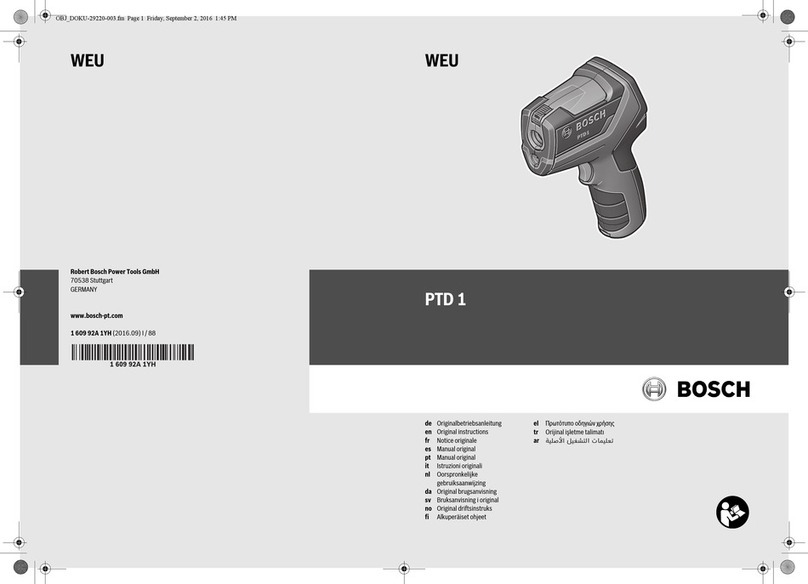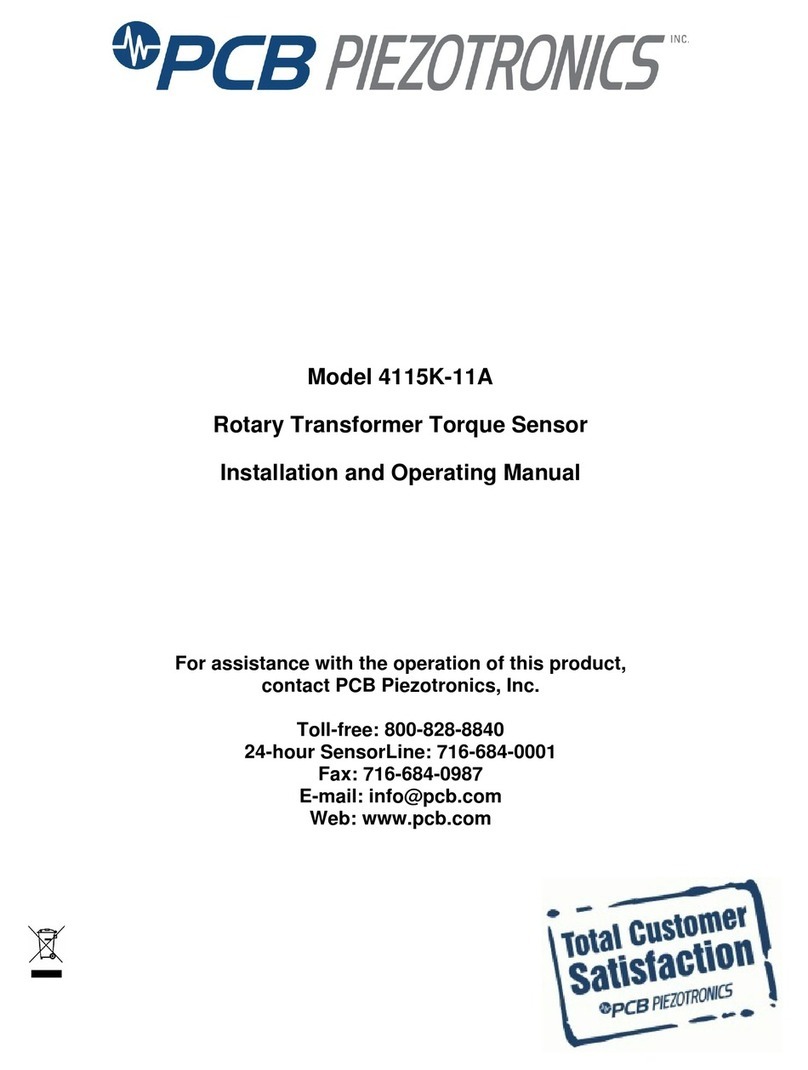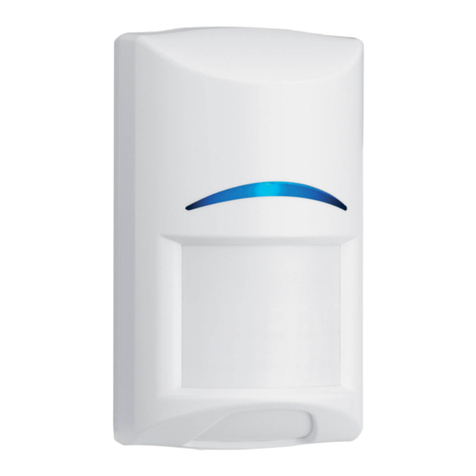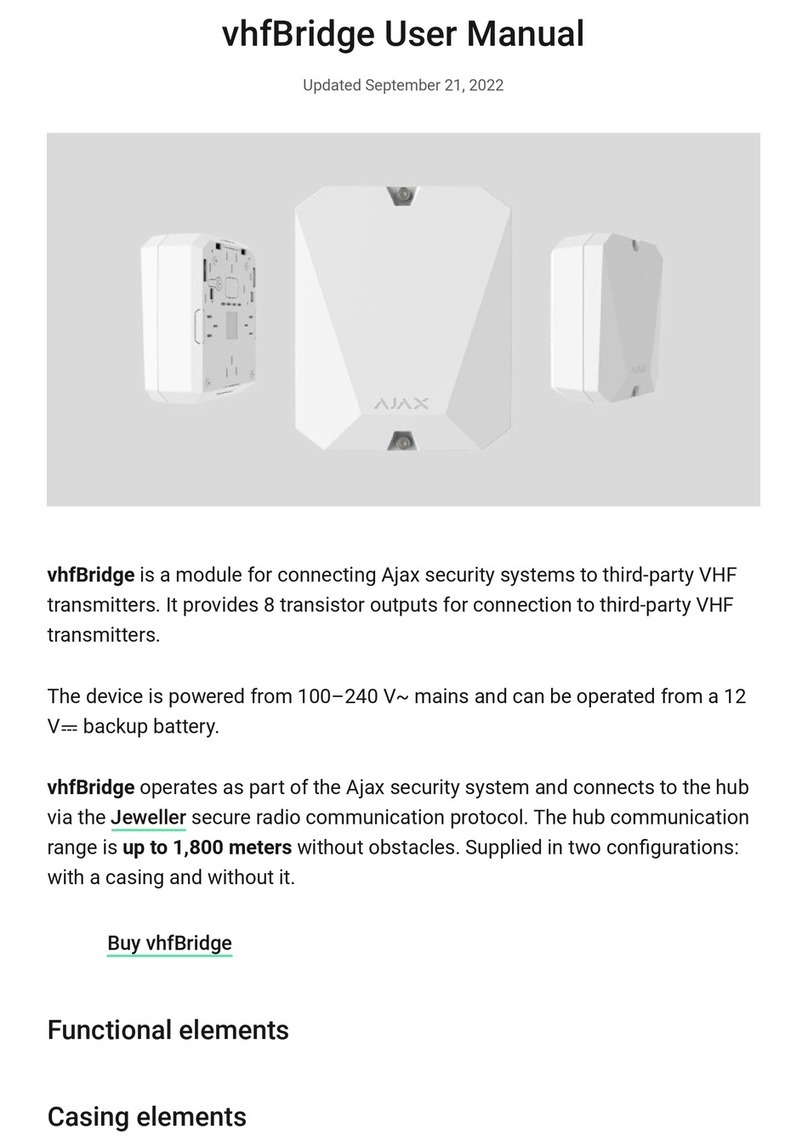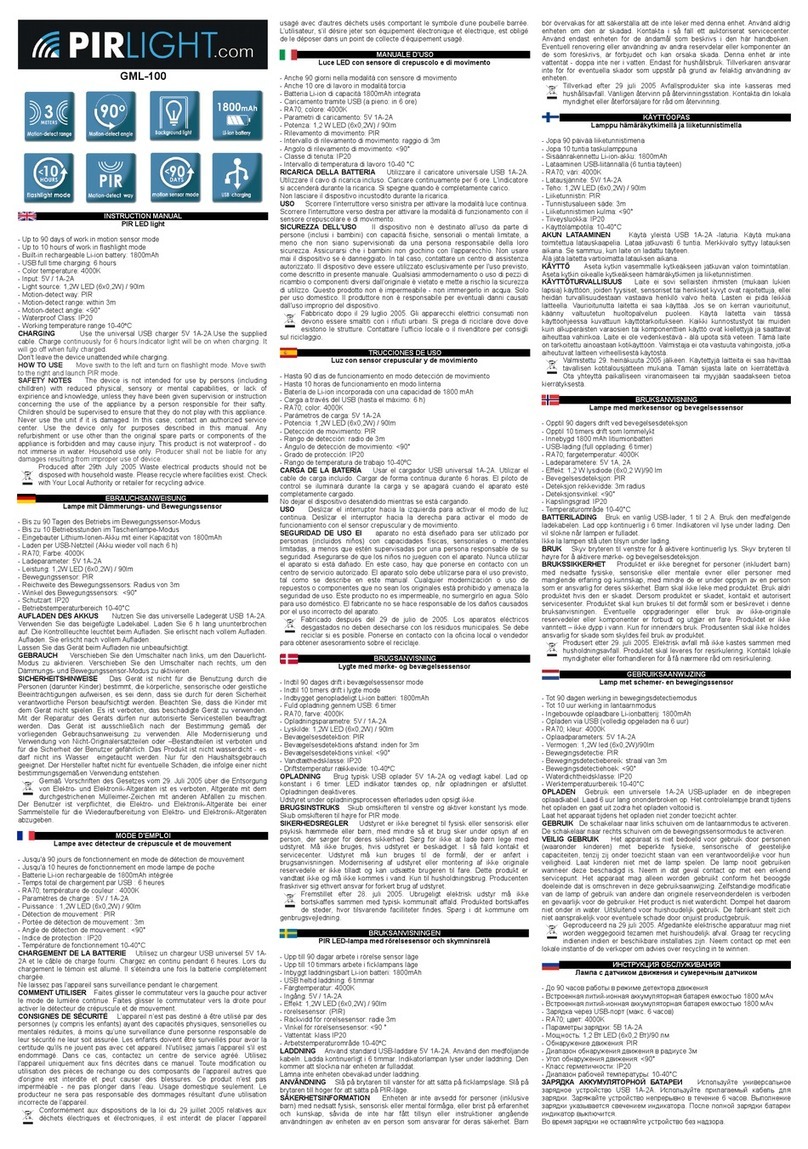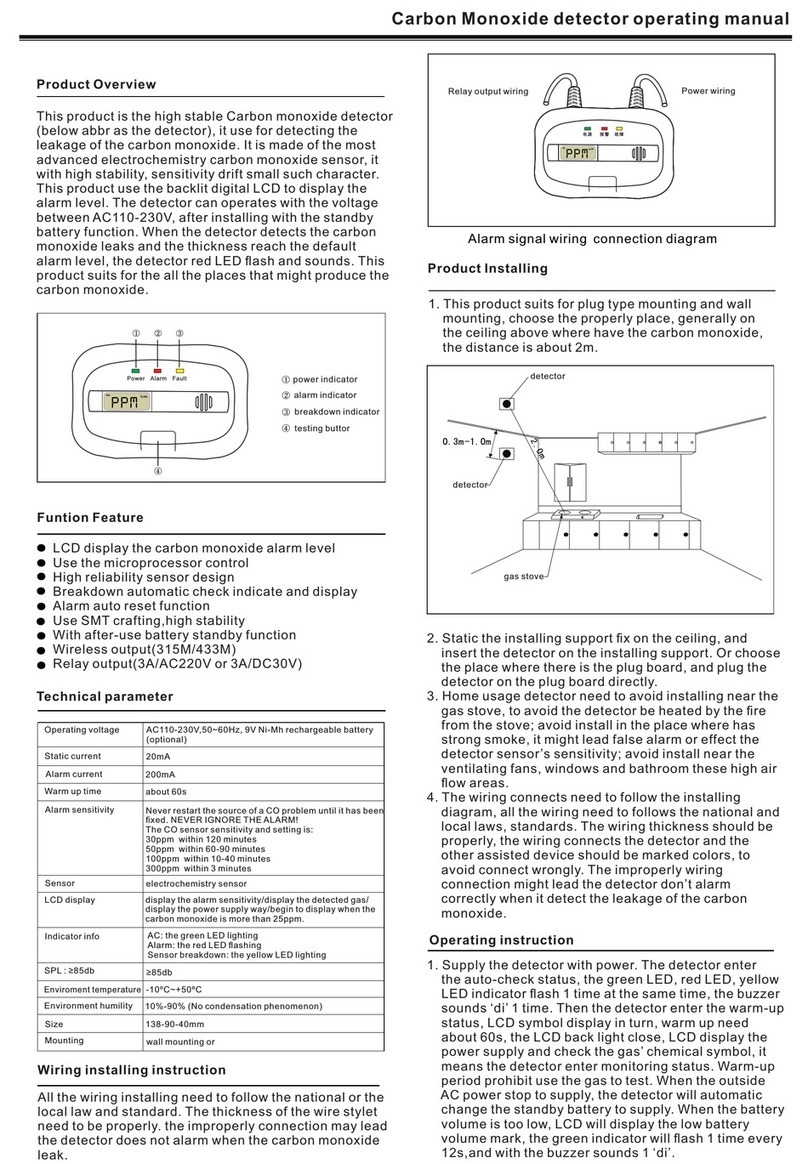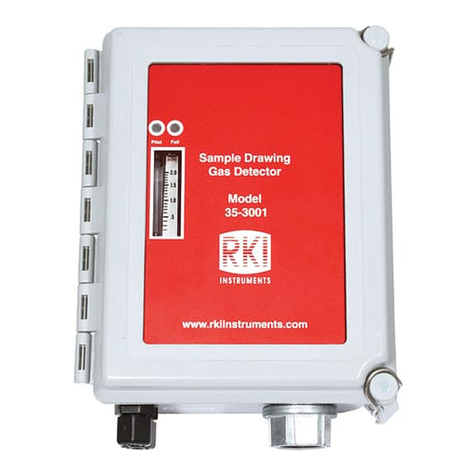
EsiWelma s.r.l.
rev. 00 of 01-09-10 / pg. 4
__________________________________________________________________________________________
Please note that the in terms of measuring the level of CO
2
, the detector will reach maximum precision after
14 days of uninterrupted operation of the device following installation or a long period of stoppage (several
months).
Still, acceptable precision is achieved after two days of operation, in other words after the first full calibration
cycled according to the ABC Logic™ self-calibration system algorithm.
In order to obtain maximum precision, during the calibration period following installation (or long period of
stoppage) do not expose the detector to high quantities of CO2, for example the ongoing presence of many
people in the premises where the detector is installed.
Use a permanent marker to write the replacement date of the detector on the plate provided and place it in a
visible position (after installation is completed).
Use a wet cloth and mild detergent to periodically clean the device.
Do not use aggressive detergents like alcohol, ammonia, solvents etc.
Before cleaning the detector, switch off the system power supply to avoid the risk of electric shock.
Warning The detector and its sensing element have been designed for ongoing use in areas where there is permanent
occupation by people, so normally pollution-free.
The presence of gases or vapours from some aggressive substances such as alcohol, silicons or solvents
found in some detergents or polishes, or from the fumes generated by cooking or also an excess of steam,
may cause inappropriate action of the detector and in the long term could affect the reliability of the device.
__________________________________________________________________________________________
__________________________________________________________________________________________
__________________________________________________________________________________________
Technical
specifications
Power supply (see models) 230Vac
±
10% or 115Vac
±
10% or 24Vac/dc
±
10%
Frequency / Consumption 50/60Hz / 3.5W maximum, 2.5W average
Sensing element
CO
2
Temperature
Relative humidity
• NDIR (nondispersive infrared)
• NTC thermistor
• Capacitive sensor series HS
Measuring range
CO
2
Temperature
Relative humidity
• 0...20.000ppm (other ranges on request)
• 0…50°C
• 0...99% RH
Measuring precision (@25°C)
CO
2
Temperature
Relative humidity
•
±
100ppm + 3% of the readout
•
±
3%
•
±
10%
Measuring stability
(CO
2
) 2% on full scale, for the lifetime of the sensor
Measuring linearity
(CO
2
) 1% of full scale
Dependance on altitude
(CO
2
) 0.13% of the readout per mm of Mercury column
Calibration for altitude
(CO
2
) 0…9.900m at steps of 100m
Dependance on temperature
(CO
2
) 0.2% of full scale
Calibration for temperature
(CO
2
) Automatic
Response time (T90)
(CO
2
) 2m
Command outputs (see models) • SPDT relay - capacity of the contact 250Vac 3A or 30Vdc
3A
• Analogue 4...20mA or 0…10Vdc
Alarm threshold Settable from interface with operator
Operational lifetime of a detector 15 years from installation
Max detectable area about 100m
2
(approximate; for larger areas install several
devices at suitable distances from each other)
Protection Rating IP40 when correctly installed
Operating temperature / humidity
Storage temperature / humidity 0...50°C / 0...95% RH (non condensing)
- 40...70°C / 0...95% RH (non condensing)
Dimensions and weight Mounting holes compatible with 503 type flush mounting box
Maximum dimensions: 130 x 90 x 40 mm
Weight: 360g
Enclosure ABS/PC UL94-V0 flame retardant
Conformity
EMC Electromagnetic Compatibility
Low Voltage (LVD)
EMC 2004/108/EC – EN 61000-6-1 + EN 61000-6-3
LV 2006/95/EC – EN60730-1
To be filled in by Installer
Installer's stamp
Installation site
Product order number
Installation date Replacement date




